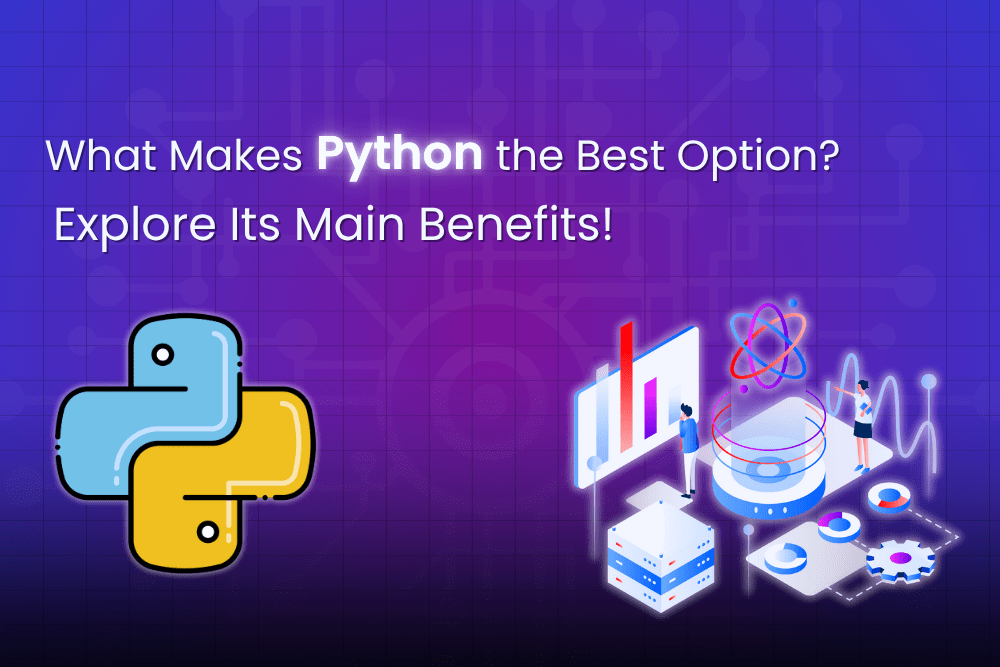Ruby and Python are two of the most popular languages for developing web applications because they are both powerful and accessible. Most people new to programming start with one or the other, but which is best for you?
Web applications are frequently written in Ruby and Python, two widely-used programming languages. Both languages are clean, easy to read, and free to use. They are high-level back-end languages used to make the server functions that support the front end of an application. Either Ruby or Python can create cross-browser and cross-platform web applications.
There are differences between Ruby and Python; they are not the same thing. If you’re interested in becoming a developer, you can focus on either of these areas, depending on your preferences and the types of apps you’d like to create.
Python is better for instructional purposes or for people who want to write short programmes but don’t want to be developers, whereas Ruby is better for commercial web apps. There are more distinct differences between Ruby and Python that can be discovered in various ways.
In this article, we will discuss everything about Ruby and Python like – Ruby vs. Python performance, Ruby vs. Python syntax, is Ruby similar to Python, and so on.
Stand out with our STEP in Python Full Stack Development Course
What Exactly Is Ruby?
Yukihiro Matsumoto made Ruby in 1995. It is a high-level, interpreted, general-purpose language. Ruby is an object-oriented programming language mostly used for web apps, but it can also be used for data analysis, prototyping, and other things. It is also used to write software in several different settings.
Most developers say that writing Ruby code is like writing in English.It strikes a compromise between imperative and functional programming, making the code simpler to comprehend. So, Ruby makes code that is both elegant and easy to read while still being expressive.
Ruby is a programming language that gives programmers much power and freedom. It is mostly used for making websites, and the popular Ruby on Rails framework is built on top of it.
What Benefits Does Ruby Offer?
Ruby’s best feature is that it gets things done. These advantages come from many parts of its syntax and its ability to change.
- Elegant
Ruby is often the first language that programmers learn. This is because Ruby’s simplicity is highly valued. The language is simple to learn and closely resembles English. For example, in Ruby, you would type the following to display “Hello, World” on the screen:
puts “Hello, World”;
- Easy
Metaprogramming is a feature found in Ruby and many other programming languages.This capability enables the programme to predict and generate code depending on a developer’s initial input. The process of coding in Ruby is simplified more as a result.
- Intentional
Ruby is a programming language that was developed before a lot of other languages. Therefore it will always stand out compared to the languages it aspires to be better than, such as Python and Perl. Ruby is more object-oriented than Python and has a better organizational structure than Perl.
- Fast
Ruby, even though it is an interpreted language, can help you save time while developing software. The primary benefit is a significant increase in the rate at which programmers can write code.A well-known web framework built on Ruby called Ruby on Rails. Developers that use this framework report spending as much as forty percent less time creating apps.
Get enrolled for Python Online Training and learn from industry experts!
What Exactly Is Python?
Ruby and Python both like certain things.Python is a general-purpose, high-level programming language created four years before Ruby. The language is also typed on the fly, and it collects garbage.
Guido van Rossum made Python with the idea that code should be easy to read in mind. Because of this, several parts of the Python programming language focus on making code easy to read.
For example, Python can be used with the procedural programming paradigm, but it is mostly based on the object-oriented paradigm. The goal of this structure is to help programmers write code that is clearer and makes more sense.
Structured programming, of which procedural programming is a type, is another thing that Python fully supports. While and for loops, if-then-else statements, and other organised control flows are encouraged by this programming paradigm to produce clean, high-quality code. Python can be used for functional programming as well.
Python’s extensive usage of whitespaces is among its most significant features. Whitespace is usually made up of characters like enter, tab, and the space bar that are used to separate words but don’t have a value.
This whitespace is called “significant” in Python because it shows where blocks of code start and end. In most other languages, curly brackets are used instead. Some people hate Python’s whitespace, but others like its ease.
Python’s library is another thing people like about it. Some people call Python a “batteries-included” programming language because its standard library is complete. Master the Python Skills from experts only at Python Training in Pune.
What Benefits Does Python Offer?
Python is renowned for being both straightforward and versatile. The outcome is a language that is both simple and multifaceted in its function.
- Easy
Python is another simple programming language that’s easy to pick up and use. Compared to Java and C, the grammar is written in a way that makes it easier to read, and fewer lines of code are required to perform the same tasks.
- Productive
When creating code in Python, user-friendly data structures such as lists and dictionaries increase productivity. Developers can focus on problem-solving instead of learning to create code.
- Portable
You do not have to make any changes to your code to guarantee that Python is compatible across all platforms. Python has a high degree of portability, which means that it is compatible with a wide range of operating systems.
- Extensive
Third-party module support and the availability of large libraries make it easier for programmers to integrate new features and capabilities into their work. Almost 300,000 packages may be found in the Python Package Index (PyPi).
Want to start a career as a Data Scientist? check out Data Science Online Training
Comparison Between Ruby And Python
It’s crucial to contrast Ruby and Python side by side to comprehend their similarities and differences and where they stand in terms of competition. Here we go.
- Web Framework
The related frameworks for Ruby and Python, Django and Ruby on Rails, are comparable.
A number of these languages have repositories, use the popular model-view-controller (MVC) design pattern, and provide a variety of libraries for extending the language’s capabilities (PyPi for Python and RubyGems for Ruby).
- Machine Learning
Python is the go-to artificial intelligence language because it has many libraries (AI). Most AI algorithms are made with Python, so programmers who work on machine learning must know how to use it well.
Ruby is on the other side. Even though it has potential, Ruby’s machine learning and AI libraries must be improved before competing with Python in this field. Python won’t be replaced by Ruby any time soon.
- Documentation & Libraries
As mentioned above, RubyGems and PyPi are large repositories that let developers add many features to their code. Still, Python has a much wider variety of libraries than Ruby does.
Because Python is a more popular language or has been around longer, its libraries are more developed and have better documentation for developers to follow.
- Performance
Ruby or Python are both examples of interpreted languages that perform exceptionally well. Furthermore, both of them are open-source. It’s not always useful to compare the performance of different open-source programming languages. You can always optimise their libraries to help you reach your ultimate goal.
- Environment for Testing
Both Ruby and Python are eager to adopt test-driven development (TDD). PyTest and Python’s unit tests are there to encourage developers to write better code by running small tests often.
But Ruby has behavior-driven development, which Python doesn’t (BDD). This testing, brought to Ruby by RSpec, compares your code to a list of requirements that developers have written down.
- Community
Ruby and Python are both open-source, meaning they have large communities almost by definition.
Though, Ruby didn’t start to become popular until Ruby on Rails came out. On the other hand, Python had a ten-year head start on fame. And because Python is easy to learn, many developers will start using it.
- Learning Curve
Ruby is well-known for having syntax that is quite beautiful. It uses a straightforward English language that is not difficult to comprehend. Python, on the other hand, is just as easy to use and has a vocabulary that is even more intuitive. There is no way to discuss the simplicity of learning Python in a roundabout manner. It is that simple.
- Popularity
Python is an extremely well-known language, particularly among people just beginning their language study careers. On the other hand, Ruby is synonymous with the framework known as Ruby on Rails, which is currently in great demand and a popular topic of discussion in software development.
Hope so now you have the answer of – Ruby for Python programmers.
Our Python Web Development Training makes it super easy to be a Python developer.
Difference Between Ruby and Python
Here is the key distinction between Python vs. Ruby:
| Python | Ruby |
| Created by Guido Van Rossum in 1991 | 1995 creation of Yukihiro Matsumoto |
| It is easy to read and quite direct. | Occasionally, debugging can be exceptionally challenging. |
| A high-level programming language is Python. | A language for object-oriented programming is Ruby. |
| Not a fully object-oriented programming language | The object-oriented programming language in its entirety. |
| It offers a wider selection of libraries. | Its library is smaller than Python’s. |
| A variable cannot be reset once it has been set. | The entry will stay in the symbol table as long as the variable is active. |
| Encourage multiple inheritances | Provide support for single inheritance. |
| It has bigger lambda functions. | It only supports one-line lambda functions. |
| It uses a method. | It has functions. |
| Programming with Python is primarily utilized in academia and science. | Ruby is mostly used for functional programming and web development. |
| The Python community is highly creative and web-oriented. | The Ruby community is quite stable, but innovation is slower. |
| A simple learning curve exists for Python. | Ruby’s learning curve is steep. |
| The most crucial traits of Python are its conservatism, readability of the code, speed, and efficiency. | The most important attributes of Ruby are its expressiveness, efficiency, elegance, and power. |
| Django is a Python framework that Adrian Holovaty and Simon Willison created in 2005. | In 2005, David Heinemeier Hansson built the Ruby on Rail framework. |
We have discussed all the significant differences between Python vs Ruby. So of you have question for ruby vs python speed and – is ruby faster than python. Hope so now you have the answer. And Of Course not, Python is speedy.
Should I learn Ruby or Python?
Ruby’s popularity increased between 2010 and 2016, although the industry is shifting toward Python. Here’s some information that may help you decide: If a customer, work, or project already requires you to know Ruby, you should learn it. You should learn Python if not. Keep in mind that Python 2 and Python 3 are not identical. Beginners in programming should begin with Python 3, the most recent version.
In other words, the transition from Ruby to Python necessitates coding language. Python is ideal if you have a certain amount of coding skills.
Final Thoughts
As we’ve seen, both Ruby and Python are high-level, object-oriented programming languages developed with particular objectives. The choice of which to learn initially depends only on your company’s needs. This is also a matter of personal preference.
Our Python vs. Ruby head-to-head comparison has assisted you in determining which language best meets your needs. If you’re interested in studying either, you may access some excellent classes for learning Ruby and Python at Python Training in Pune.






